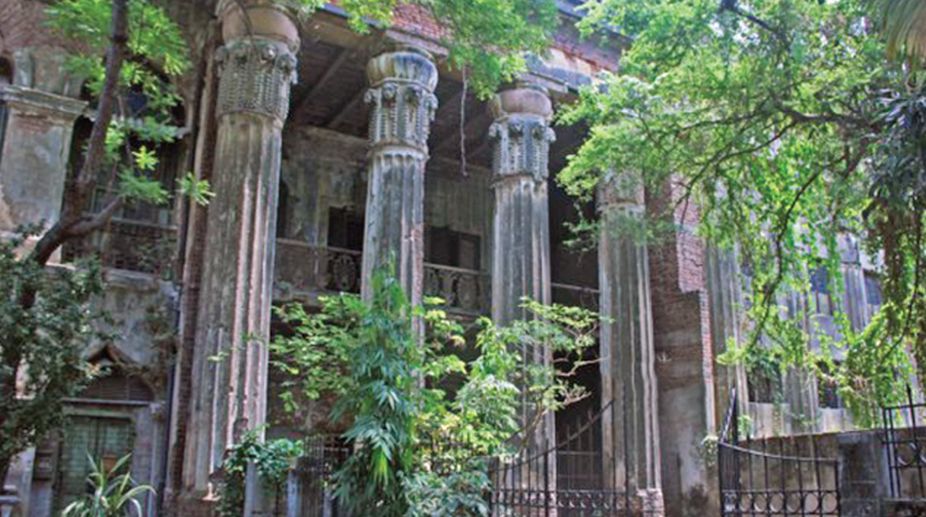Minister terms Budget anti-people
State minister Beccharam Manna today said the Budget is totally anti-farmer and anti-people.

It is reported that a few more heritage buildings of significant architectural design in Kolkata may be demolished in the near future to give way to high-rise office buildings or shopping malls which are in demand. Promoters and developers have set their eyes on the remaining prominent heritage buildings in Kolkata since they are at prime locations.
One such building complex in central Kolkata presently houses commercial offices, banks, private firms and had earlier housed airlines offices. The building designed in colonial architecture style easily draws the attention of passers-by.
It is believed that the tenants have gone to the court to get access to the remaining portion of the building (since a major portion has already changed hands); only the court’s verdict will decide the building’s fate. In this way many heritage buildings of Kolkata have already been demolished. These include the Pan-Am airline office building along with the building of Maharaja of Burdwan on Chowringhee road and a few other buildings including ‘Senate House’.
Advertisement
Buildings not only provide living and working spaces and nurture minds, as happened in the case of Tagore House in Central Calcutta, but they also tell the history of the city and as well as the country.
“Netaji Bhavan” in Kolkata tells us how Netaji escaped from that house in his car in spite of the fact the British were alert to stop his doing so.
Tagore House tells us how young Rabindranath would listen to stories of house maids who would sit on the long veranda and discuss among themselves their village tales. Many such historical facts are attached with each building.
There are buildings built by the French and Portuguese in their colonies in Chandannagore and Goa in India. The buildings’ style and character tell us of the architectural style, art and culture in those distant lands.
These countries, through their Consulates in Kolkata are restoring buildings, and re-using them as restaurants and public areas in Chandannagar and other parts of West Bengal. These have been reported and they have aroused interest among people.
Most of the heritage buildings are not maintained properly due to lack of funds. The buildings themselves do not earn sufficient rent to maintain themselves. In such a situation there is a need for buildings to re-use the spaces in such a way that they bring in good rent and or income that will enable them to maintain their pristine facades.
In recent years such measures have been taken in some localities of old Kolkata where residential buildings have been restored and designed as contemporary guest rooms and restaurants to attract local people and tourists, and they are doing well.
Such initiatives should be encouraged by the local government and wherever required financial support needs to be extended on easy terms. It is not known whether the Heritage Commission of the State provides any support to such restoration initiatives by the owners of buildings; if not, they should take the step because restoration of buildings may prevent their demolition.
Each new high-rise building built with concrete, brick, stone, glass and steel uses high energy-intensive materials which have consumed resources and have created pollution. Further pollution can be avoided if the building is restored and re-used. Restoration and re-use projects can move forward with the joint effort of the public and private sector.
The writer is Executive Director, Centre for Human Settlements.
Advertisement